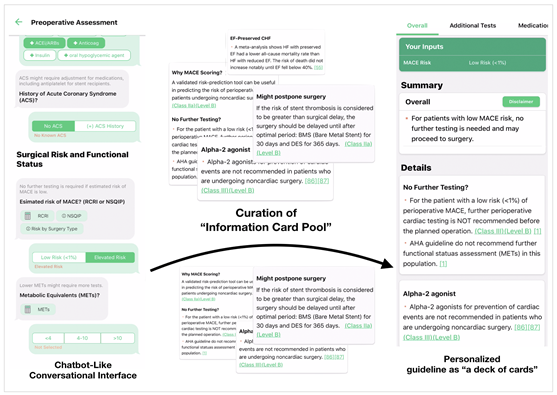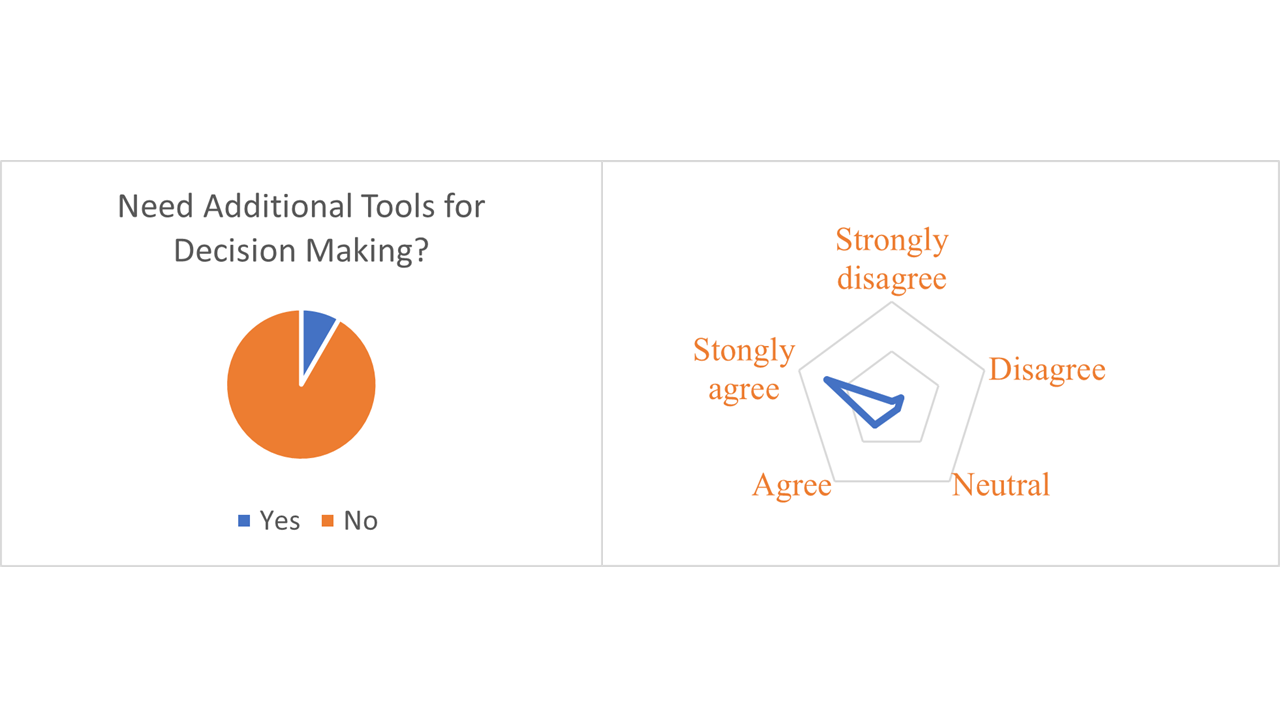Background: Perioperative patient management in accordance with the clinical practice guidelines is effective only when followed. The ACC/AHA perioperative guidelines contain many recommendations which cannot be translated in electronic health record alerts or order sets.
Purpose: We built an app to improve efficiency in preoperative evaluations based on the ACC/AHA guidelines. We present results of a post-hoc analysis of questionnaires of 12 clinicians who took part in a formal usability study.
Description: Participants were 12 Internal Medicine residents at Englewood Hospital. They were presented with two predefined written preoperative scenarios describing a patient with multiple comorbidities and on cardiac medications undergoing low-risk and high-risk surgery respectively. The participants were directed to use the mobile application and complete tasks including determining appropriate medical or surgical decisions. The data presented here is a post-hoc analysis.The app was developed on the avoMD platform for clinical guidelines by a team of physicians. The clinical content was primarily from the 2014 ACC/AHA Guidelines on Perioperative Cardiovascular Evaluation and Management of Patients Undergoing Noncardiac Surgery. Given the complexity and length of recommendations in the guideline, the goal of the app was to effectively support clinicians to use their clinical judgement based on the evidence-based recommendations for preoperative patients in complex clinical settings.Results: 11/12 clinicians thought that this app could serve as the single tool for cardiac perioperative risk assessment (Figure 2). The participants had a strong desire to use the app frequently (Figure 3).
Conclusions: ACC/AHA guidelines for perioperative management are complex. We built an app to provide clinical decision support for perioperative evaluations based on these guidelines. A post-hoc analysis of a usability trial conducted in Englewood Hospital demonstrated that clinicians were strongly interested in using the app frequently and found it to be the most useful tool in perioperative assessment. It remains to be validated with a larger sample of users.


